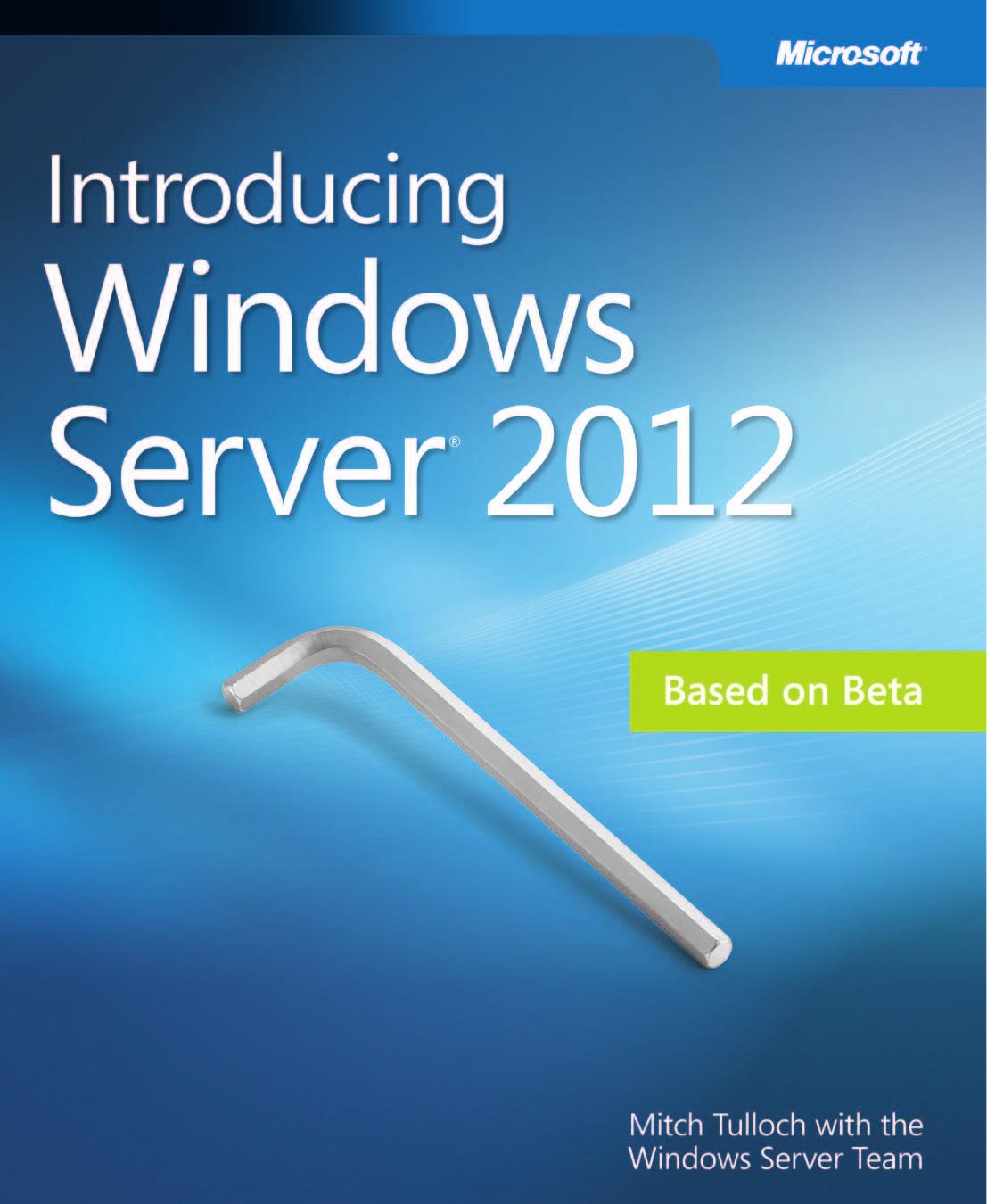Introducing Windows Server 2012 by Mitch Tulloch

Author:Mitch Tulloch
Language: eng
Format: epub, mobi, pdf
Publisher: Microsoft Press
Published: 2012-07-21T16:00:00+00:00
Guest clustering
Failover Clustering of Hyper-V can be implemented in two ways:
Host clustering, in which the Failover Clustering feature runs in the parent partition of the Hyper-V host machines. In this scenario, the VMs running on the hosts are managed as cluster resources and they can be moved from one host to another to ensure availability of the applications and services provided by the VMs.
Guest clustering, in which the Failover Clustering feature runs in the guest operating system within VMs. Guest clustering provides high availability for applications and services hosted within VMs, and it can be implemented either on a single physical server (Hyper-V host machine) or across multiple physical servers.
Host clustering helps ensure continued availability in the case of hardware failure or when you need to apply software updates to the parent partition. Guest clustering, by contrast, helps maintain availability when a VM needs to be taken down for maintenance. Implementing guest clustering on top of host clustering can provide the best of both worlds.
Guest clustering requires that the guest operating systems running in VMs have direct access to common shared storage. In previous versions of Windows Server, the only way to provision such shared storage in a guest clustering scenario was to have iSCSI initiators running in the guest operating systems so they could connect directly with iSCSI-based storage. Guest clustering in previous versions of Windows Server did not support using Fibre Channel SANs for shared storage. VMs running Windows Server 2008 R2 in a guest clustering scenario can use Microsoft iSCSI Software Target 3.3, which can be downloaded from the Microsoft Download Center. Figure 3-5 illustrates the typical way guest clustering was implemented in Windows Server 2008 R2.
Download
Introducing Windows Server 2012 by Mitch Tulloch.mobi
Introducing Windows Server 2012 by Mitch Tulloch.pdf
This site does not store any files on its server. We only index and link to content provided by other sites. Please contact the content providers to delete copyright contents if any and email us, we'll remove relevant links or contents immediately.
Test-Driven iOS Development with Swift 4 by Dominik Hauser(10392)
Filmora Efficient Editing by Alexander Zacharias(6711)
The Infinite Retina by Robert Scoble Irena Cronin(6216)
Learn Wireshark - Fundamentals of Wireshark. by Lisa Bock(4482)
Linux Device Driver Development Cookbook by Rodolfo Giometti(4048)
Edit Like a Pro with iMovie by Regit(3916)
Linux Administration Best Practices by Scott Alan Miller(2961)
Linux Command Line and Shell Scripting Techniques by Vedran Dakic & Jasmin Redzepagic(2910)
Mastering PowerShell Scripting - Fourth Edition by Chris Dent(2873)
Creative Projects for Rust Programmers by Carlo Milanesi(2712)
MCSA Windows Server 2016 Study Guide: Exam 70-740 by William Panek(2601)
Docker on Windows by Stoneman Elton(2392)
Kali Linux - An Ethical Hacker's Cookbook: End-to-end penetration testing solutions by Sharma Himanshu(2372)
Hands-On AWS Penetration Testing with Kali Linux by Karl Gilbert(2214)
Hands-On Linux for Architects by Denis Salamanca(2149)
Programming in C (4th Edition) (Developer's Library) by Stephen G. Kochan(2125)
Computers For Seniors For Dummies by Nancy C. Muir(2124)
The Old New Thing by Raymond Chen(2078)
Linux Kernel Debugging by Kaiwan N Billimoria(1834)
